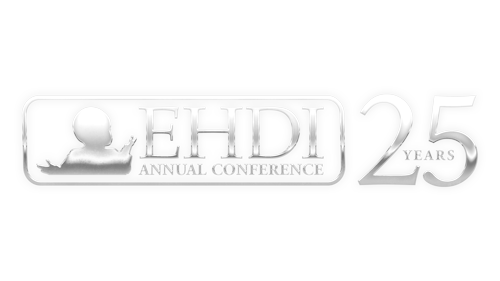2026 Early Hearing Detection & Intervention Conference
March 15-17, 2026 • Jacksonville, FL
3/06/2023 | 11:30 AM - 12:00 PM | Visual languages: A crucial part of early language acquisition for DHH children | DECC 212
Visual languages: A crucial part of early language acquisition for DHH children
Early hearing detection and intervention service is shifting attention away from visual mode of communication to the auditory channel of communication. Majority of the intervention services provided for Deaf and Hard-of-Hearing (DHH) children are speech-compliant with pro-speech professionals gradually phasing out visual language approach practitioners. Unfortunately, the speech outcomes of DHH children in oral approach intervention programs have not achieved maximum age-appropriate proficiency (Geers, et al., 2017). This means that there are some gaps unfilled by exposure to speech only when it comes to the language experience of these children. Deficiency of language acquisition puts DHH children at a developmental disadvantage, thus calling for more effective intervention approaches. A child's brain recognizes both visual and auditory language inputs and can process purposeful exposure to two or more languages. Both gesture language and ASL are visual languages that can support language acquisition, speech acquisition, and the social-emotional and cognitive development of a child. This conceptual paper will attempt to justify the need for purposive concurrent use of visual languages (gesture language and ASL) with speech in early hearing and intervention services for DHH children.
- The participants will be able to identify the shortfalls of speech-only approach to early hearing intervention services
- The participants will be able to describe the benefits that the inclusion of visual languages in early hearing intervention offers
- The participants will understand the key design elements for language acquisition programs using visual and oral languages.
Presentation:
3420032_15662BerniceAdekeye.pdf
Handouts:
Handout is not Available
Transcripts:
CART transcripts are NOT YET available, but will be posted shortly after the conference
Presenters/Authors
Emily Wojahn Small
(Co-Presenter), Gallaudet University, emily.wojahn@gallaudet.edu;
Emily (Wojahn) Small, a hearing teacher of the deaf by training, has been a classroom teacher, early intervention provider, and regional hearing resource coordinator in Hawaii and Colorado. Emily is currently the program coordinator for DC's EHDI Program while pursuing her PhD in deaf education with a specialization in early intervention at Gallaudet University. Having spent most of her career and higher education in Deaf-centric spaces, Emily is fluent in American Sign Language and an advocate for deaf rights and language access.
ASHA DISCLOSURE:
Financial -
Nonfinancial -
AAA DISCLOSURE:
Financial -
Nonfinancial -
Bernice Adekeye
(Primary Presenter), Gallaudet University, gent2nice@yahoo.com;
Bernice, a second-year doctoral student in Bilingual Education at Gallaudet University, is passionate about promoting adequate and appropriate early language exposure opportunities for DHH children. Her passion for early intervention started in the third year of her first degree in Special Education (deaf education option). At that time, she began learning about the prime position that language occupies in the life of a Deaf child and how much less support for language acquisition her society offers to DHH children. She paired the new knowledge with her struggle for language growth as a late-deafened and became empathetic towards pre-lingual DHH children. Bernice has had over ten years of post-graduation work experience with DHH children of different ages in her varied positions as subject teacher, education officer, volunteer and advocate, Deaf school competition committee chair, conference and workshop presenter, author, NGO founder, and research student.
ASHA DISCLOSURE:
Financial -
Nonfinancial -
AAA DISCLOSURE:
Financial -
Nonfinancial -
